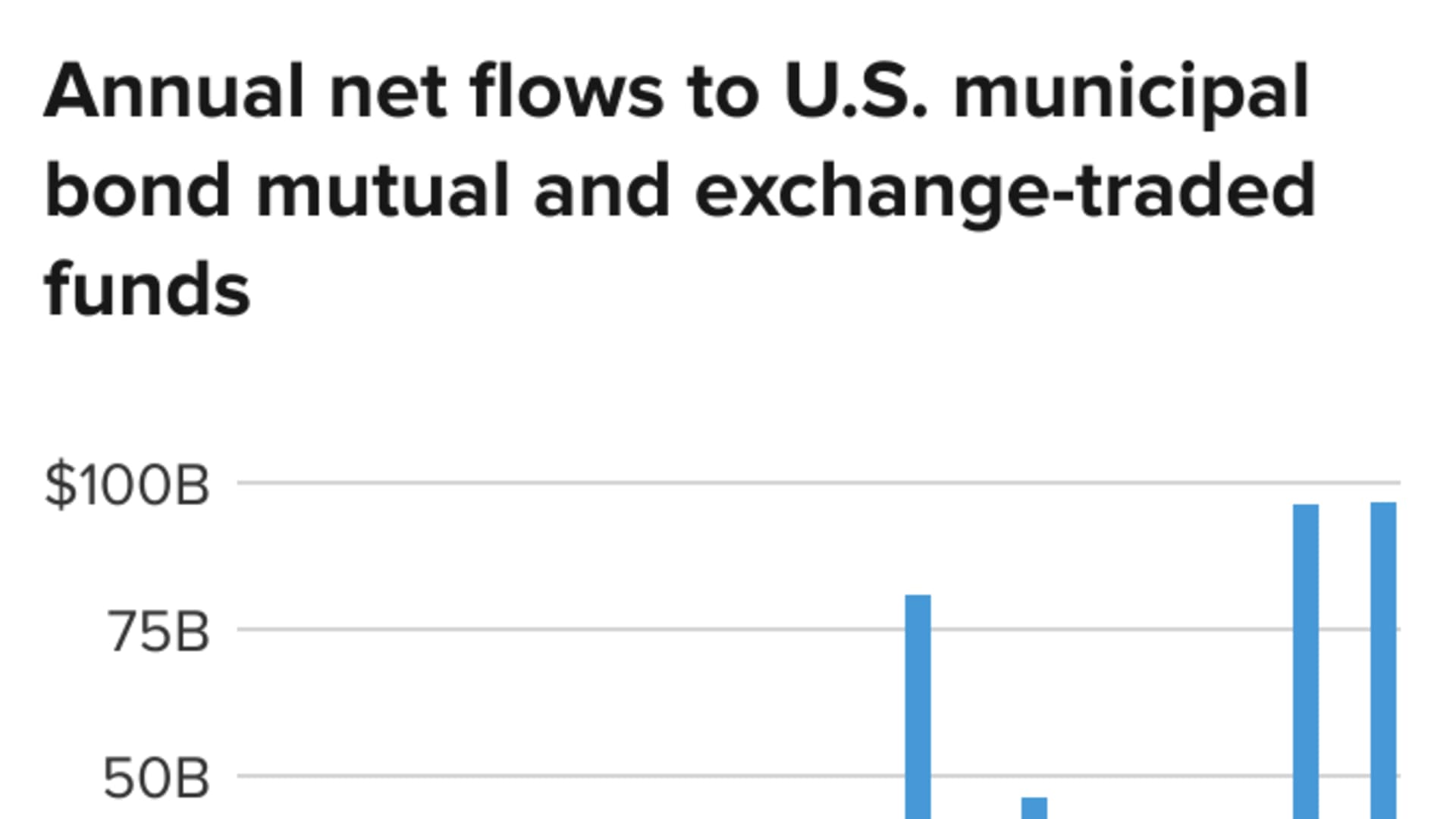
- Muni bonds are appealing in part because the interest they pay is typically free from federal taxation.
- However, some of them — private-activity bonds — are generally taxed under the alternative minimum tax calculation.
- Some muni bond funds are explicitly "AMT-free" so investors know their holdings won't generate income that's subject to the AMT.
- While 5 million people were subject to that taxation pre-2018, the share is now minimal due to tax-law changes in effect through 2025.
There was a time not too long ago when holding "AMT-free" municipal bond funds might have made perfect sense for many investors.
These days? Maybe not so much.
With a small share of taxpayers subject to the alternative minimum tax, or AMT, since a federal tax overhaul took effect in 2018, it's less likely that your tax situation would get an extra benefit from being invested in such a fund, experts say.
Get Boston local news, weather forecasts, lifestyle and entertainment stories to your inbox. Sign up for NBC Boston’s newsletters.
"From a financial-planning perspective, very few people should be overly concerned about whether their bond fund is 'AMT-free,'" said certified financial planner Roger Young, thought leadership director for T. Rowe Price.
"There's nothing necessarily wrong with a fund that's expressly AMT-free — we have some — but most people shouldn't have to worry about it," Young added.
Money Report
The AMT is essentially a tax that individuals whose income exceeds certain thresholds may have to pay. They calculate their tax liability under both the regular income tax structure and the AMT — which disallows certain deductions and includes some income not taxed under the normal rules — and then pay the higher of the two amounts.
In 2017, the year before the Tax Cuts and Jobs Act took effect, roughly 5 million taxpayers were subject to the AMT. The next year — when higher exemption and phaseout amounts and other tweaks from the legislation kicked in — that number dropped to about 150,000, according to 2019 data from the IRS.
For 2022, the AMT exemption amount is $75,900 for single filers and $118,100 for married couples filing jointly. The exemptions begin to phase out at $539,000 for singles and $1,079,800 for joint filers.
For investors, a key lure of muni bonds is that the interest they pay is generally free from federal tax, as well as state taxes if you live where the bond is issued.

However, under the AMT, that's not the case for income from most private-activity muni bonds, which are those not exclusively used for government functions, such as airports or sports stadiums.
For anyone who may still be subject to the AMT, a muni bond fund that excludes those holdings might make sense. Yet for most investors, other funds could be just as appropriate — and give exposure to those private-activity bonds.
"For a fund that specifically is avoiding any AMT income, that narrows the universe of potential investments for the fund," Young said.
Additionally, even if you were to get surprised by the AMT, most funds' income is largely tax-free.
"Even for funds that can hold bonds that are subject to the AMT, it's not usually a majority of the portfolio holdings," said Beth Foos, associate director of fixed-income strategies at Morningstar.
And, most muni bonds would qualify as AMT-free anyway, Foos said.
"It's the majority of the market, in general," she said.
Historically, muni bonds subject to the AMT generally offered higher yields than those that are not (although the difference may have compressed a bit since the tax changes were implemented).
For retirees, be aware that even if your muni bond income isn't taxed, it is considered when it comes to calculating how much of your Social Security income is subject to tax and whether you'll pay higher Medicare premiums.
It's also worth noting that the AMT changes made under the Tax Cuts and Jobs Act are scheduled to disappear at the end of 2025 (along with a raft of other provisions that generally lowered how much individuals pay in taxes).
If Congress does not act before then, an estimated 7 million taxpayers will be ensnared by the AMT when the rules revert to pre-2018 law, according to estimates from the Tax Policy Center. In 2017, the AMT exemption was $54,300 for single filers ($84,500 for married filing jointly), and the exemption phased out when AMT taxable income hit $120,700 for singles ($160,900 for joint filers).
"People shouldn't ignore the fact that the law is scheduled to sunset," Young said. "Then whether you'd hold those funds would really be about your individual situation."






